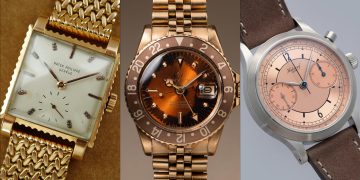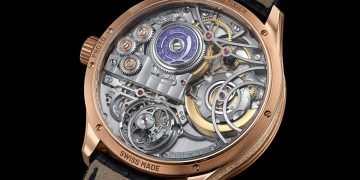The world of watchmaking is one where tradition and innovation intersect, where the artistry of mechanical design meets the precision of cutting-edge technology. Over centuries, watchmakers have refined their craft, pushing the boundaries of what’s possible with mechanical and digital watches. Today, the industry stands at the crossroads of advanced technology and meticulous craftsmanship, with several groundbreaking innovations reshaping the way watches are designed, built, and operated.
In this article, we’ll delve into the technological innovations that have dramatically transformed the watchmaking industry, exploring how these advancements continue to enhance both performance and aesthetic appeal. From new materials to revolutionary movements, the evolution of watchmaking is a story of continuous refinement and forward-thinking invention.
1. The Rise of Quartz Movements: Precision Meets Simplicity
One of the most significant technological advancements in the history of watchmaking was the introduction of the quartz movement in the late 1960s. This development revolutionized the industry, offering unparalleled accuracy and affordability compared to traditional mechanical watches. Quartz technology relies on the vibrations of a quartz crystal to keep time, a concept that was first introduced by Seiko with their landmark Astron watch in 1969.
Why Quartz Was Revolutionary:
- Accuracy: Quartz watches are significantly more accurate than mechanical watches. A quartz crystal oscillator vibrates at a precise frequency, allowing the watch to keep time with minimal deviation, typically within a few seconds per month.
- Affordability: With fewer moving parts and a more straightforward design, quartz movements are easier and cheaper to produce, making watches more accessible to a wider range of consumers.
- Low Maintenance: Quartz watches require minimal maintenance compared to their mechanical counterparts, as they don’t rely on winding or manual movement to function. The only required maintenance is the battery replacement every few years.
Impact on the Industry:
- Quartz Crisis: The widespread adoption of quartz technology in the 1970s led to what is known as the “Quartz Crisis,” which dramatically impacted Swiss watchmakers, as they struggled to compete with the low-cost, highly accurate quartz timepieces from Japan. However, it also spurred Swiss innovation, leading to the development of Swiss quartz technology, which is now considered the gold standard in the industry.
- Widespread Adoption: Quartz watches became ubiquitous, with luxury brands like Rolex, Patek Philippe, and Audemars Piguet eventually incorporating quartz movements into their collections, offering high-precision alongside traditional mechanical models.
2. The Introduction of the Tourbillon: Compensating for Gravity
The tourbillon is one of the most iconic and technically complex inventions in the history of horology. It was created by Abraham-Louis Breguet in the late 18th century to counteract the effects of gravity on the accuracy of pocket watches. The tourbillon is essentially a rotating cage that holds the balance wheel and escapement, which compensates for gravity’s influence, improving timekeeping accuracy when the watch is in a stationary position.
Why the Tourbillon is Groundbreaking:
- Accuracy in Motion: By rotating the escapement and balance wheel assembly, the tourbillon minimizes the gravitational errors caused by the vertical position of a pocket watch or wristwatch, improving precision.
- Aesthetic Appeal: Beyond functionality, the tourbillon has become a symbol of technical mastery in the watchmaking world. The intricate mechanism has a mesmerizing visual appeal, often showcased through open-heart dial designs or transparent case backs.
Impact on the Industry:
- Symbol of Craftsmanship: The tourbillon represents the pinnacle of watchmaking artistry and engineering, with its integration requiring a high level of expertise and skill. While it’s often considered a luxury feature, it highlights the pursuit of perfection in mechanical timekeeping.
- High-Price Tag: Watches with tourbillons are often associated with high-end brands and tend to be significantly more expensive due to the complexity and precision required in creating them. Brands like Jaeger-LeCoultre, Patek Philippe, and Audemars Piguet are known for incorporating tourbillons into their designs.
3. Ceramic Cases: Durability Meets Modern Aesthetics
In recent years, ceramic has become a game-changer in watchmaking, particularly in the design of watch cases. Unlike traditional stainless steel, ceramic is incredibly scratch-resistant, lightweight, and offers a sleek, modern aesthetic. Brands like Omega, Rolex, and Hublot have incorporated ceramic into their collections, creating timepieces that are not only durable but visually striking.
Why Ceramic is Revolutionary:
- Scratch Resistance: Ceramic is extremely hard, making it far less susceptible to scratches than stainless steel or gold. This means that ceramic watches maintain their pristine appearance for much longer, even after years of wear.
- Lightweight: Despite its hardness, ceramic is lighter than metals like stainless steel, making watches with ceramic cases much more comfortable for long-term wear.
- Aesthetic Appeal: Ceramic can be finished with a high-gloss or matte surface, giving the watch a sleek, modern look that appeals to a wide range of tastes.
Impact on the Industry:
- Aesthetic Innovation: Ceramic has allowed for new, contemporary designs that blend well with both traditional and modern watch styles. Its use also signals a shift towards more innovative materials that enhance both form and function.
- Increased Demand for Durability: The adoption of ceramic has redefined the standards for durability in luxury watches, encouraging other watchmakers to incorporate new materials to improve resilience.
4. Smartwatches: A Fusion of Tradition and Technology
The emergence of smartwatches has dramatically altered the landscape of horology. Combining the traditional art of watchmaking with modern digital technology, smartwatches offer functionalities like fitness tracking, GPS navigation, heart rate monitoring, and smartphone connectivity. Brands like Apple, Samsung, and Garmin have taken the smartwatch market by storm, offering consumers an entirely new type of wearable technology.
Why Smartwatches Are Transforming the Industry:
- Connectivity: Smartwatches allow users to receive notifications, track fitness data, and even make calls, making them incredibly versatile.
- Customization: With apps and digital displays, smartwatches offer users the ability to customize their interface, watch faces, and functions according to their personal preferences.
- Health Monitoring: Many modern smartwatches come with built-in health-monitoring features, such as heart rate sensors, sleep tracking, and even ECG readings, appealing to users who prioritize wellness and active living.
Impact on the Industry:
- Integration of Digital and Analog: Luxury watch brands like Tag Heuer and Montblanc have embraced the smartwatch trend by creating hybrid models, combining traditional analog designs with digital features, ensuring they remain relevant in a tech-driven world.
- New Market Dynamics: The rise of smartwatches has forced traditional watchmakers to rethink their offerings, integrating more tech-savvy features like smart movements, solar charging, and Bluetooth connectivity.

5. The Development of Solar-Powered Watches: Harnessing the Power of the Sun
Solar-powered watches have become a significant technological breakthrough in the watchmaking industry. By using a solar cell to convert light into energy, these watches can be powered continuously without the need for a battery replacement. Seiko and Citizen have been at the forefront of this innovation, offering eco-friendly options that combine sustainability with high-level performance.
Why Solar-Powered Watches Are Innovative:
- Sustainability: Solar-powered watches are an environmentally friendly alternative to traditional battery-powered timepieces. The absence of a disposable battery reduces the environmental impact.
- No Battery Changes: With a solar-powered movement, there’s no need to worry about the watch running out of power or needing a new battery. As long as the watch is exposed to light, it remains operational.
- Energy Efficiency: Solar watches are incredibly efficient, with some models running for months or even years on a single charge from light exposure.
Impact on the Industry:
- Eco-Conscious Appeal: Solar-powered watches have gained popularity among consumers who value sustainability and eco-conscious choices. The move toward green technologies aligns with global efforts to reduce waste and consumption.
- Longer Lifespan: With solar technology, watches can last for decades without the need for regular battery changes, leading to lower maintenance costs and increased longevity.
6. Anti-Magnetic Movements: Resilience in a Digital Age
With our increasing dependence on digital devices that emit magnetic fields, watchmakers have responded by developing anti-magnetic movements to protect the delicate mechanical movements inside luxury watches. Rolex, Omega, and Patek Philippe have introduced innovative materials like Oystersteel and Nivachron to create movements
that can withstand high levels of magnetic interference.
Why Anti-Magnetic Movements Are Important:
- Protecting Timekeeping Accuracy: Magnetic fields can cause mechanical movements to lose accuracy, which is particularly problematic for high-end mechanical timepieces. Anti-magnetic movements shield against this.
- Innovation in Materials: Watchmakers use advanced alloys and composite materials to create anti-magnetic components that allow watches to operate smoothly in environments exposed to electronic devices or magnetic fields.
Impact on the Industry:
- Enhanced Durability: Anti-magnetic technology has increased the resilience of watches, making them suitable for more demanding environments such as scientific research, aviation, and engineering.
- Increased Versatility: With anti-magnetic protection, luxury watches can now be worn in a wider range of work and leisure environments without worrying about interference.
Conclusion: The Evolution of Watchmaking Technology
The watchmaking industry continues to evolve at the intersection of traditional craftsmanship and innovative technologies. From quartz accuracy and tourbillons to solar power and anti-magnetic movements, each innovation has played a crucial role in enhancing both performance and aesthetic appeal. As technology continues to evolve, we can expect even more groundbreaking changes that will shape the future of horology, making it an exciting time for collectors, enthusiasts, and industry professionals alike.
Each of these technological advancements has paved the way for new possibilities, offering watch enthusiasts a diverse range of options that combine the best of both form and function.





































